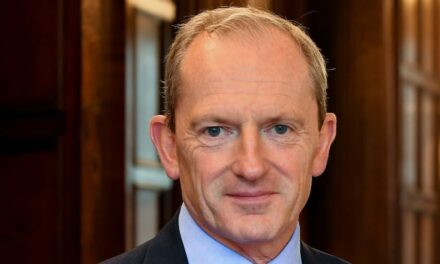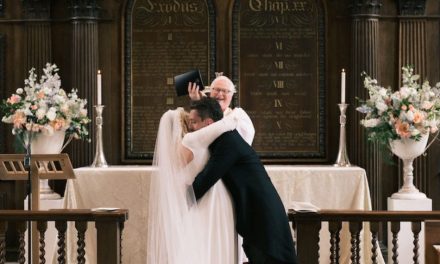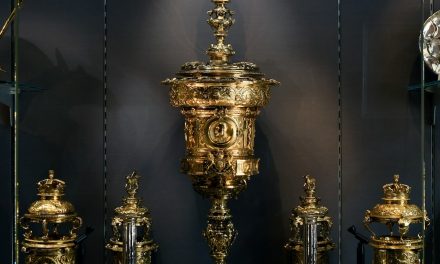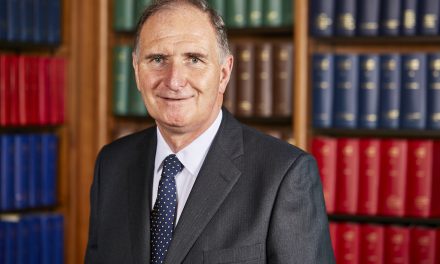Master Patric Dickinson has been designing coats of arms for Readers and Treasurers for half a century. He offers some reflections on the Inn’s armorial panels.
The first Readers of the Inn for whom I designed arms were the two who held office in 1973 – Lord Simon of Glaisdale and Mervyn Griffith-Jones (father of the present Master of the Temple). Both of them were memorable characters (not least in Lord Simon’s case for the black eye-patch he wore) and I recall with pleasure their visits to the College of Arms to discuss what aspects of their lives might suitably be represented on the coats of arms eventually granted to them. This was quite early in my heraldic career and my involvement came about purely because the herald for whom I was then working acted as the agent in both cases. It was sheer coincidence that I became a member of Middle Temple during Lord Simon’s Readership.
As presently positioned, Lord Simon’s is the second in the series of armorial panels that adorn the Prince’s Room corridor. In the intervening half-century, a further 120 coats of arms have been added and I have been responsible for the design of about one-third of these. During the same 50 years there have been a number of changes of practice in relation to the panels and it may be of interest if I set them down here.
The surviving panels date back to the end of the 16th Century and from then until 1981, the coats of arms displayed on the walls of the Hall and the corridors commemorate successive Readers, although by definition these include all the Treasurers of the Inn for the period concerned because nobody became Treasurer without having first been Reader. But in 1981, the two offices were made mutually exclusive, and the Treasurer ceased to be drawn from the ranks of ex-Readers. As a consequence, additional panels displaying the arms of Treasurers have been included in the series ever since. This means that quite often three new panels are added to the series each year, although it is an optional matter and not all officeholders have chosen to occupy their slot.
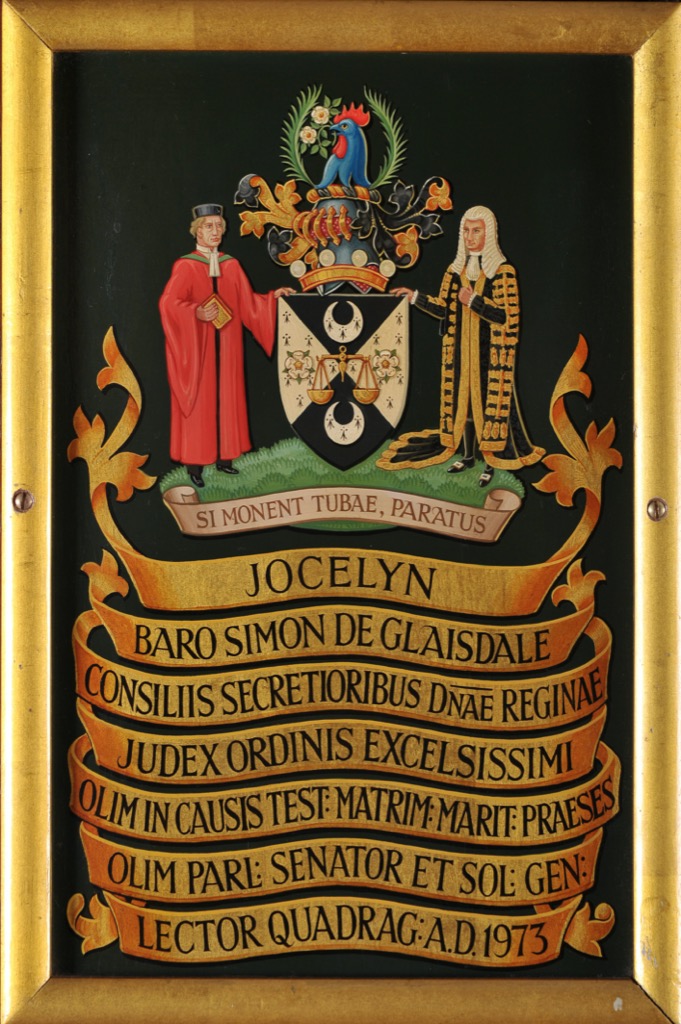
Without exception, the panels covering the period 1597-1795 display only the shields of the various Readers – unaccompanied either by heraldic supporters or by the associated crest (which, properly speaking, is the device that appears above the shield in a complete coat of arms). Between 1796 and 1976, 13 of the shields were supplemented by heraldic supporters (most of them being the arms of peers), of which eight also show the crest and seven a motto.
New ground was broken in 1977 when the panel marking Sir Patrick Graham’s Autumn Readership displayed shield and crest, the first to depict such a combination without supporters. As this was a substantial departure from previous practice, one can only suppose that Sir Patrick was particularly insistent that he should be allowed to include his crest. This could arguably have been regarded as setting a precedent, but 15 years passed before another panel used the same format. In the meantime, there had been discussion in Parliament in the late 1980s as to whether the inclusion of crests should be generally permitted. I strongly urged that the tradition of displaying shields on their own should be adhered to but Parliament in its wisdom agreed to allow each Reader or Treasurer to decide for himself.
The first to take advantage of the new dispensation was Ronald Bernstein, Autumn Reader in 1992. The evidence of the panels would tend to suggest that Leolin Price, Autumn Reader in 1990, beat him to it but Master Price was not in fact granted arms until shortly before his death in 2013, and only then was his panel painted. The number of individuals opting to include their crests has grown steadily over the last thirty years and well over 50% now do so.
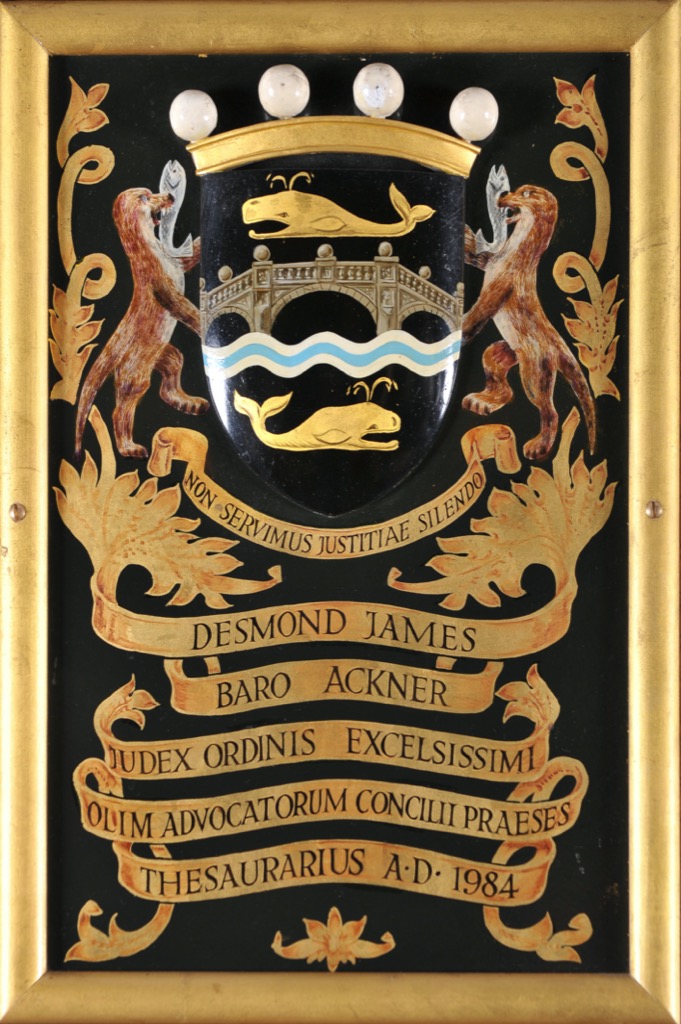
The argument as to whether this is a desirable development is fairly evenly balanced. One advantage of showing the shield by itself is that it can be painted larger and thereby make a more vivid impression than it does when accompanied by the other elements of a heraldic achievement. There would also be a pleasing visual consistency if it was just a series of shields. But it is entirely understandable that having laid out a large sum of money to have a grant of arms, numerous Readers and Treasurers prefer to display the complete coat of arms, especially as the crest almost always contains imagery additional to that included on the shield.
Sir Patrick Graham was innovative on one other score. Although personal mottoes have over many centuries been a customary feature of coats of arms, up until 1977 mottoes had appeared only on panels that displayed heraldic supporters, starting with those of Lord Frederick Campbell and Sir William Musgrave in 1796. Lord Simon’s panel is an example of one that includes shield, crest, supporters and motto (together with a coronet, helm and mantling). Master Graham’s panel was the first without supporters to include a motto. Seven Treasurers and Readers followed suit in the 1980s and the number doing so gradually increased in the following decades with the result that it is now unusual for a motto not to be shown.
One other significant development in the present century is that female Treasurers and Readers have for the first time been represented on the panels, Barbara Calvert (Lent Reader 2001) being in this respect the pioneer. The ensuing 22 years have witnessed a steady increase in the number of women heraldically commemorated. I wrote a detailed article on this subject for the 2019 issue of Middle Templar, for which reason it would I think be otiose to say more about it here.
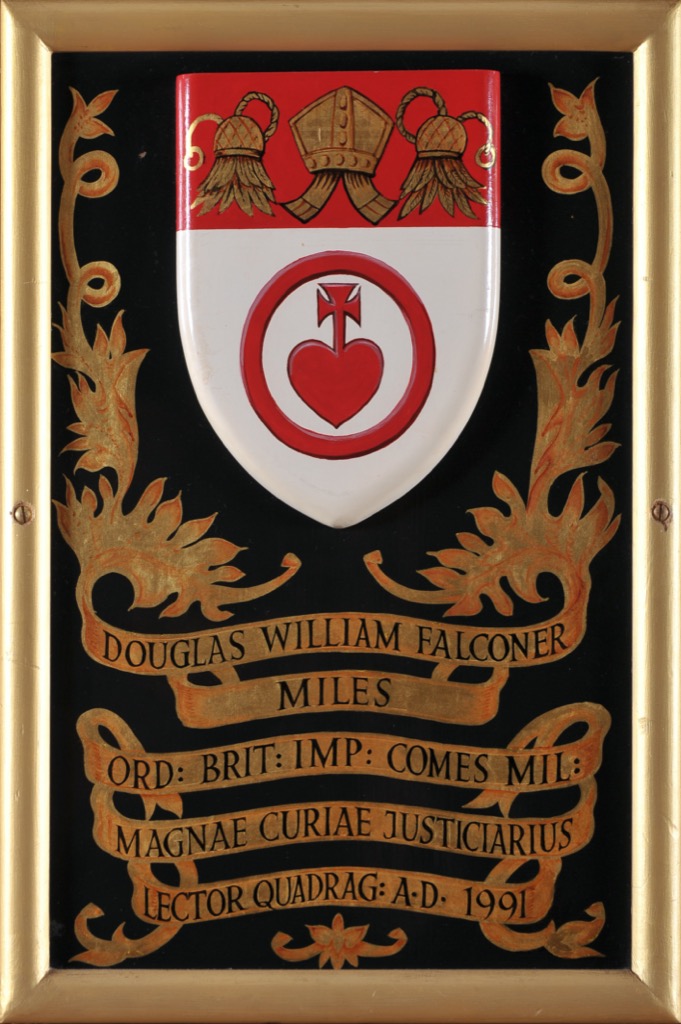
It should perhaps be mentioned that a great many of the historic shields displayed on the walls of the Hall are ones to which the individuals concerned had no official right, having merely appropriated arms belonging to other families of the same name. There is nothing unusual about this; informal and wrongful adoption of arms has always been a large element in actual heraldic usage. In recent times, the Inn has quite properly, indeed laudably, encouraged officeholders to ensure that they are properly entitled to the coat of arms that they display. As a result of this, most of those from the last half-century who are represented on the walls have been obliged to seek a grant of arms.
The exceptions are the lucky few who are entitled to arms by descent. Philip Owen (Lent Reader 1986) and his brother Owen Stable (Lent Reader 1987) were the sons of Sir Wintringham Stable (Lent Reader 1951) and all they had to do was recycle their father’s coat of arms. Sir John Latey (Lent Reader 1981) was in the same happy position, his father William Latey having been Lent Reader in 1961 (and Treasurer in 1966). I well remember the entertaining after-dinner speech that the older of the two Lateys gave in Hall on the occasion of his 90th birthday in 1975. In more recent times, Patrick Milmo (Autumn Reader 2005) has been able to replicate the shield granted to his father, Sir Helenus Milmo (Treasurer 1973).
Those Readers and Treasurers who are not already armigerous find themselves for the most part applying for grants of arms from the English Kings of Arms. But also to be seen on the panels are arms granted by the Scottish and Irish heraldic authorities, those of Master Cameron (Autumn Reader 2002) and Master Blair (Treasurer 2008) being in the former category. There is even an instance of Danish arms (in the case of Allan Heyman, Treasurer 1992).
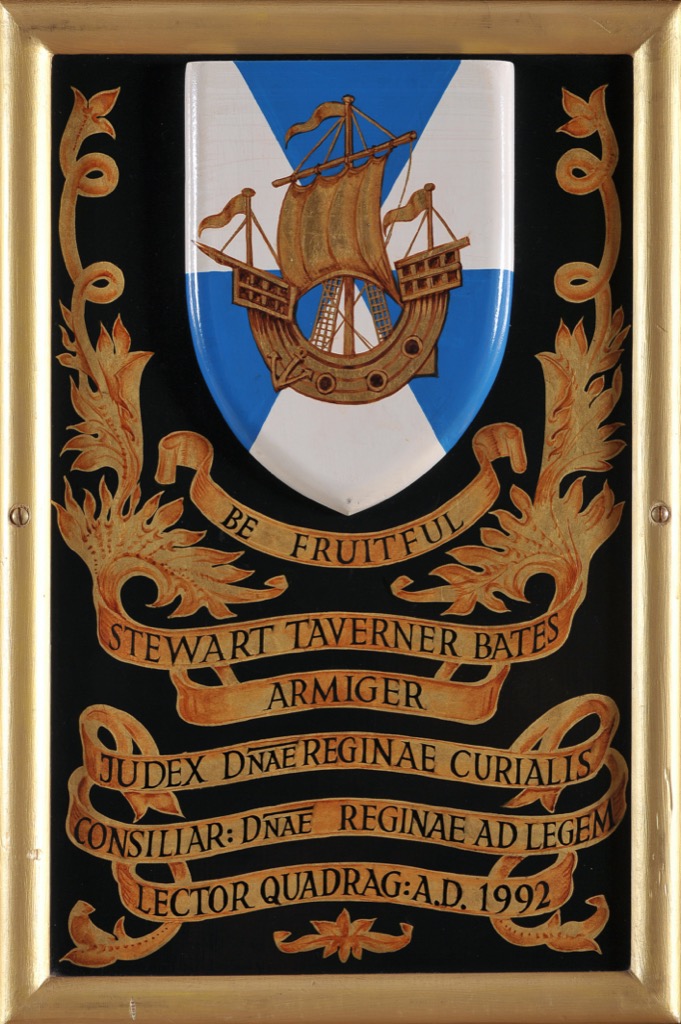
It may not be out of place to recount the reasoning behind some of the coats of arms that I have worked on over the years. Inevitably, there has been a good deal of legal symbolism, with wigs, pairs of scales, quills, scrolls and ermine all making regular appearances. Sometimes, less obvious imagery is employed. Thus, Lord Ackner (Treasurer 1984) chose to include two spouting whales in his arms, very much with garrulous barristers in mind, the one in the upper part of the shield moving in the opposite direction to the one below in order to symbolise the opposing sides taken by counsel. Sitting aloft in his crest (though not included on the panel) is an owl, suggestive of a wise old judge presiding over their submissions.
Performing much the same function as Lord Ackner’s whales are the two lions rampant facing each other in the arms of Leslie Joseph (Autumn Reader 2003), whilst the cap and bells in his crest allude to his role as Master of the Revels. The background of the shield of Ushu Karu (Autumn Reader 2019) is black and purple, a rough approximation of the colours of a circuit judge’s robes. Ben Hytner (Autumn Reader 1995) sat as a Judge of Appeal in the Isle of Man and his shield contains the well-known triskelion badge of the Isle of Man (a circular device comprising three legs in armour), which combined with a lion’s head produces a very striking design.
The arms of Master Hockman (Treasurer 2015) make copious reference to his chambers, his shield reproducing entirely the magnificent sundial that appears on the wall of 6 Pump Court where he has been Head of Chambers for a good many years.
Sometimes it is a particular area of the law that is given visual expression. Sir Douglas Falconer (Lent Reader 1991) specialised in patent and trademark law, both in practice and on the Bench. Quite a few medieval merchant marks consist of hearts with a cross on top. Placing such a mark within a ring seemed a good way of symbolising the protection of trademarks.
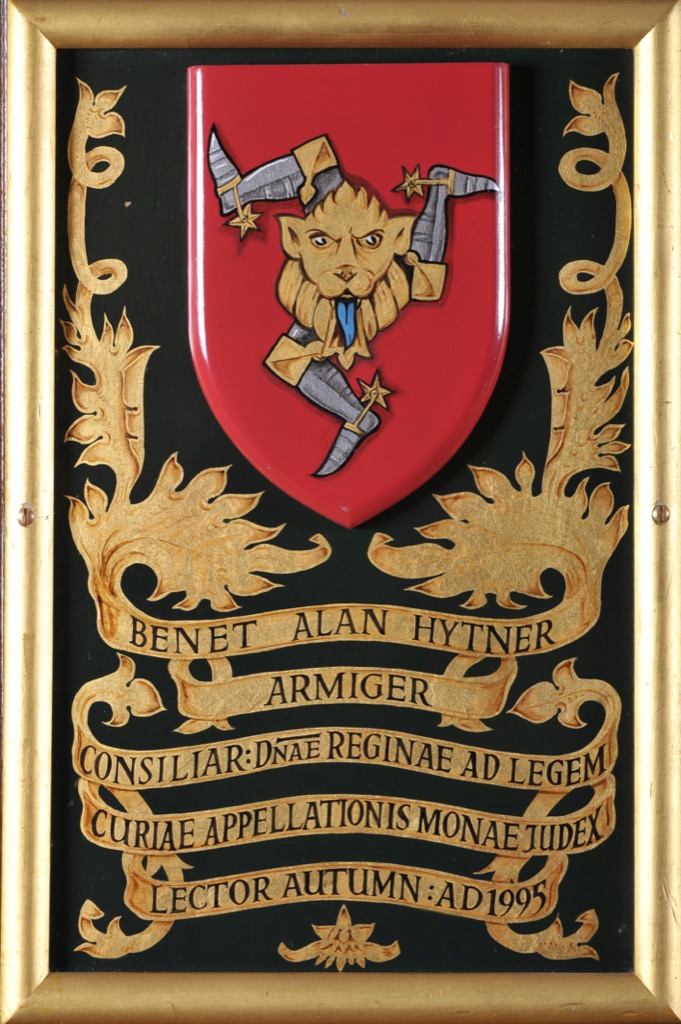
The heart in the Falconer arms is an example of a device that does double duty, by no means unusual in heraldic design. As chance would have it, hearts appear in the heraldry of numerous families named Douglas and Falconer. In the arms of Master Hochhauser (Treasurer 2021), the ‘bar dancetty’ (a jagged horizontal stripe with three upward points) has a triple purpose. It can be seen as a sequence of three chevronels, which (in a different formation) comprise the shield of a French family of Hochhauser. It represents his interest in contemporary dance. And it refers to his surname, which means ‘high house’.
Many coats of arms contain a visual play on the family’s name. Sir Douglas Falconer’s shield also includes hawk’s lures, part of a falconer’s equipment, and a mitre in allusion to his wife’s maiden name of Bishop. The principal feature of his crest (not included on the panel) is a falcon perched on a glove. A monk’s cowl features in the crest of Master Peter Cowell (Autumn Reader 2008) whilst the crest of Master Clement Goldstone (Autumn Reader 2020) comprises two gold tablets of stone (which also supply legal symbolism).
Less apparent is the purpose of the peacock’s feathers in the arms of Master Pat Edwards (Lent Reader 2017); they provide a sly reference to her married name, Mrs P Cox. The shield of Master Bean (Treasurer 2019) contains three vertical green stripes with pointed ends, suggestive of green beans, neatly representing Sir David and his two sons.
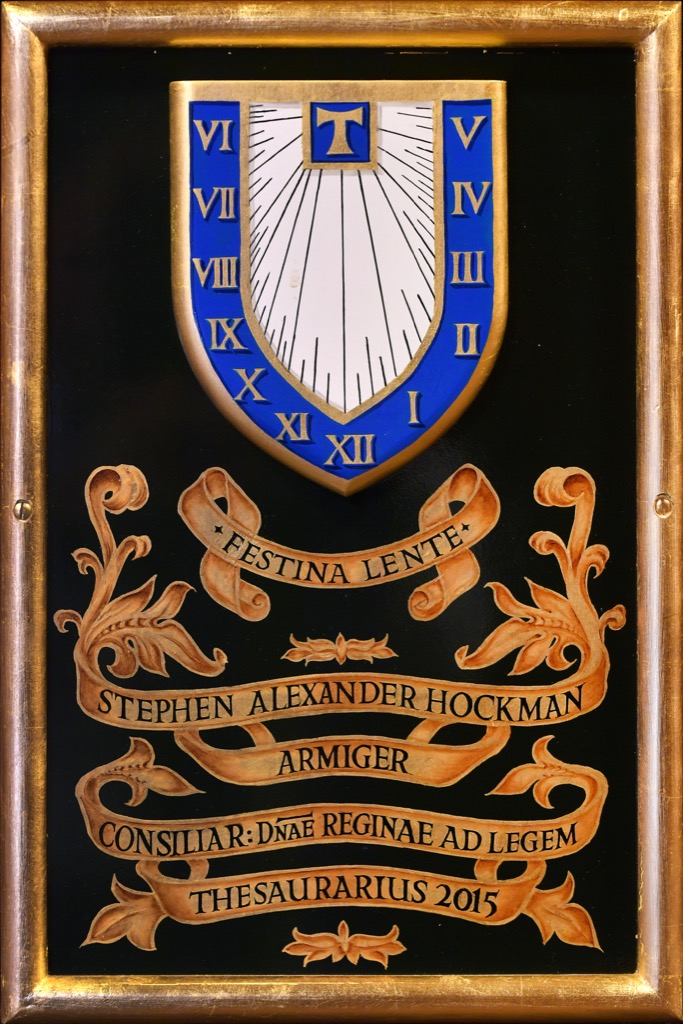
Fruit appears in coats of arms rather more often than vegetables. The immediate forebears of Sir Louis Blom-Cooper (Lent Reader 1998) had a fruit and flower business in Covent Garden, his paternal grandfather having come to England from Holland in the 1880s. The tulips and oranges in his shield thus do double duty, symbolising both the family trade and the Dutch connection.
The coat of arms I designed for Sir Paul Jenkins (Treasurer 2018) shortly before his premature death may be the first time a same-sex partnership has been represented in English heraldry. He had a Danish partner and the colouring of the lion passant that forms the main element in his shield draws on the national heraldry of England and Denmark, the left-hand half of the lion being gold on a red background and the right-hand blue on a gold background (I described Sir Paul’s arms in greater detail in a short piece I wrote for the 2018 issue of Middle Templar).
One panel I often point out to people is that of Stewart Bates (Lent Reader 1992). The background of his shield is divided into six sections to reflect the fact that he fathered six children, an aspect of his life that also inspired his choice of motto: ‘Be fruitful’. A similar imperative, albeit of wider application, was chosen by Master Pat Edwards: ‘Be plentiful in all good works’, a biblical quotation familiar to all of us from the Middle Temple Grace. Most mottoes are in English or Latin, but they can be in any language. Several Hebrew mottoes can be found on the panels and Master Karu’s is a Sanskrit version of ‘Truth prevails’.
Many a barrister has a thespian bent. Masters Arlidge (Treasurer 2003), Cowell and Etherington (Lent Reader 2022) have all been noted for their acting skills, and masks of comedy and tragedy were duly incorporated into the design of their arms. Master Etherington’s shield is accompanied by the tantalising motto, ‘Not yet unmasked’.

At the tail end of my career, I am delighted to find myself designing arms for the current Reader, Master Janice Brennan, 50 years after Mervyn Griffith-Jones served his term. It seems likely that I will be carrying out the same task for next year’s Treasurer and Readers, though they may well be the last ones for whom I perform this service.
I have to say that it has been an immensely rewarding experience to give heraldic assistance to so many Middle Templars over the last 50 years. I have met some fascinating individuals along the way, and it has been nothing less than a privilege to quiz them about their lives. In the present century, an increasing number of those I’ve helped have been people I already know and quite a few of those I’d never previously met have become friends of mine. It is a truism to say that Middle Temple is a friendly Inn, but it is something from which I have greatly benefited. And, at the risk of sounding conceited, I readily admit to a quiet satisfaction in knowing that every time I process from the Prince’s Room to yet another enjoyable dinner in Hall, I walk past more examples of my professional handiwork than can be found in any other location!
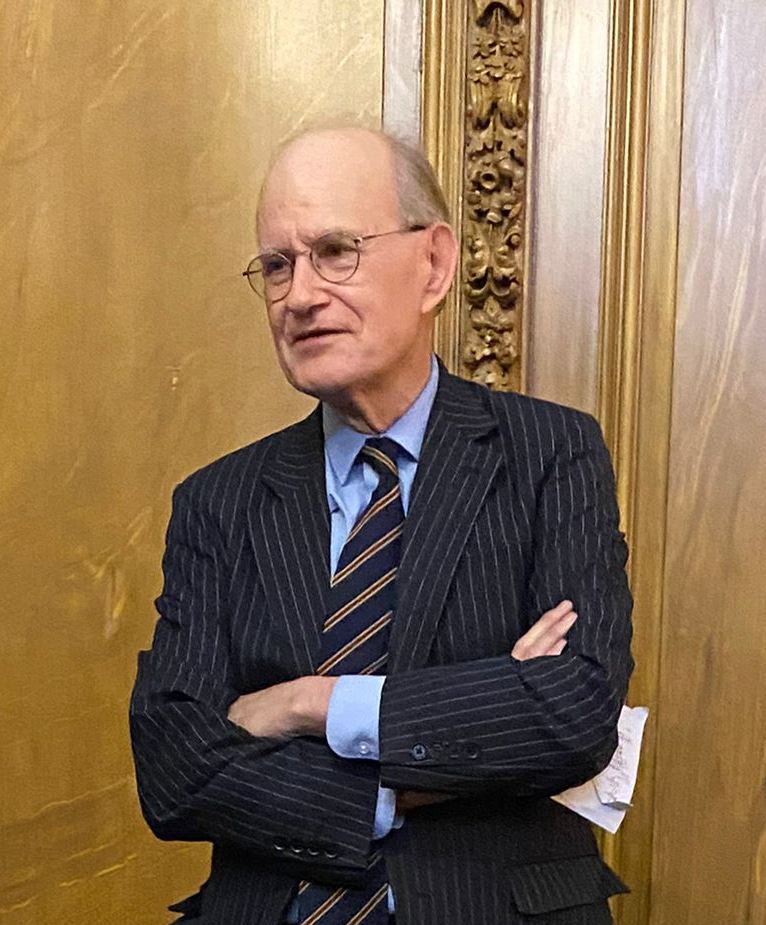
Master Patric Dickinson has worked at the College of Arms since 1968. From 1978 to 2021 he served as one of the heralds, latterly as Clarenceux King of Arms. He has been Secretary of the Order of the Garter since 2004. He was Called to the Bar in 1979 and elected a Bencher of Middle Temple in 2015.

